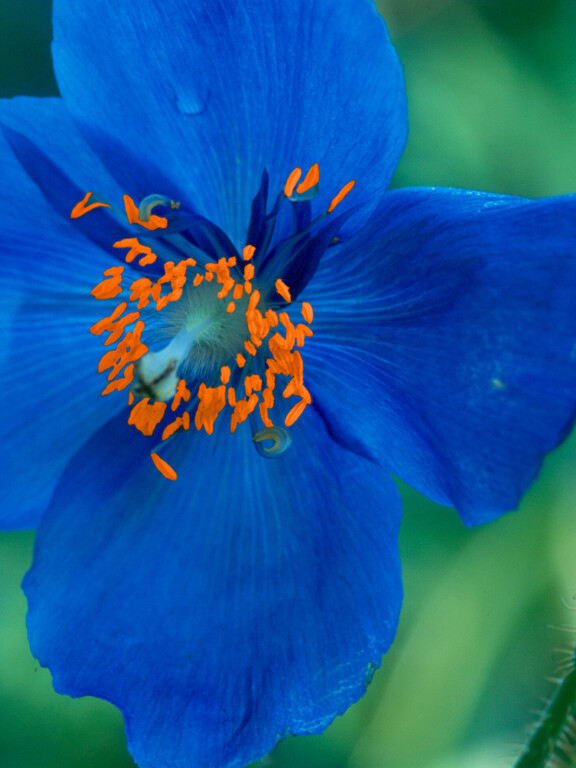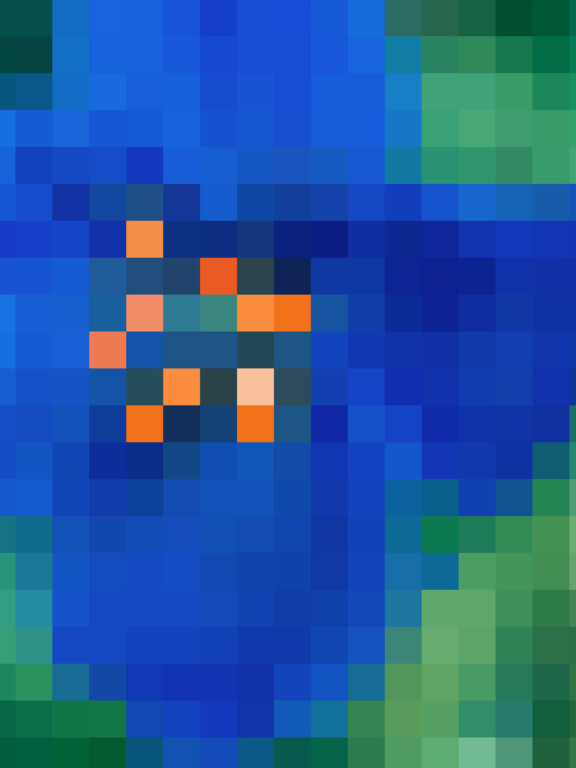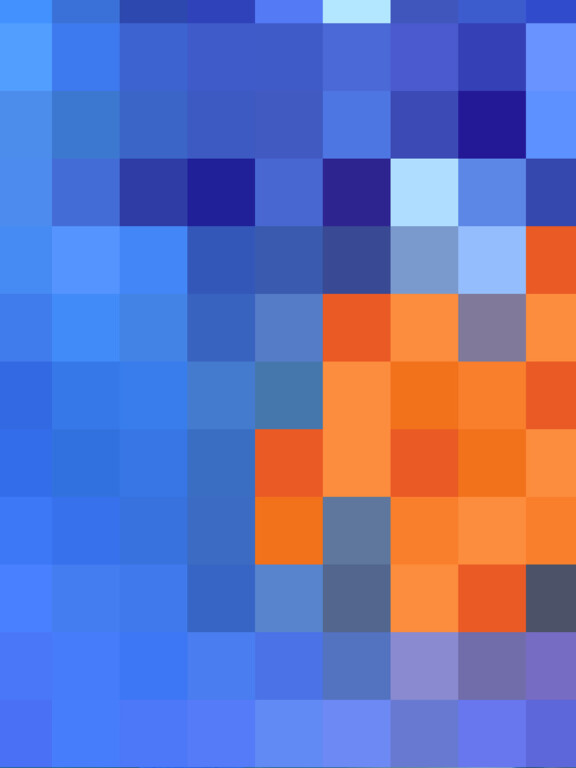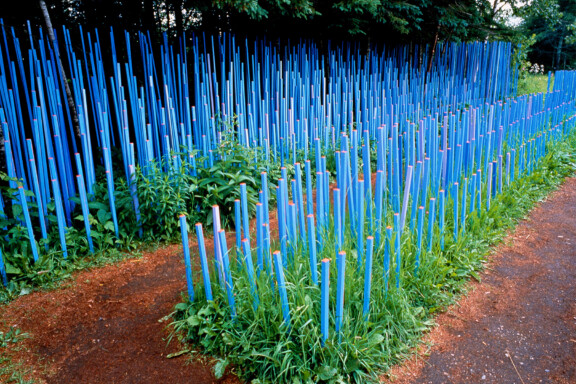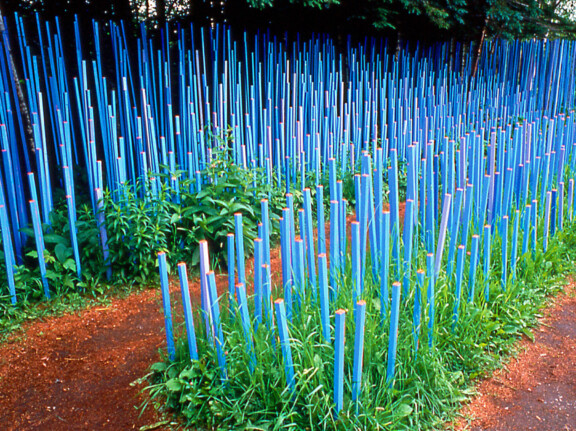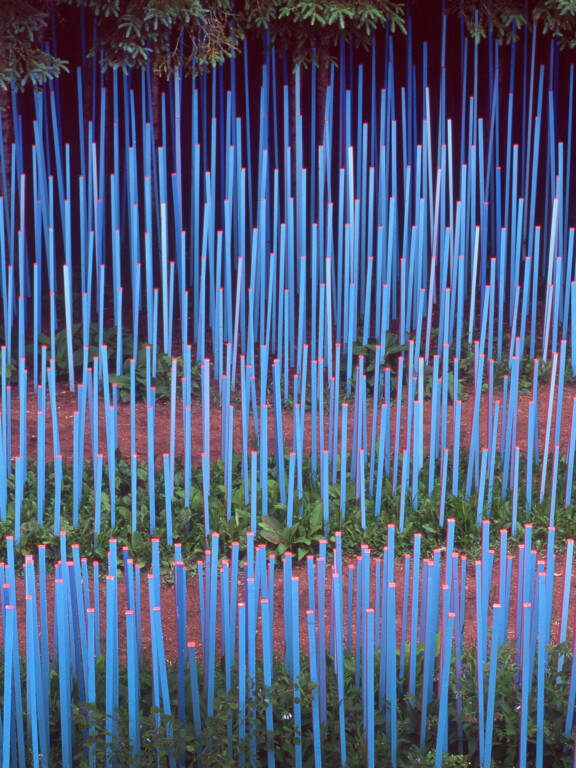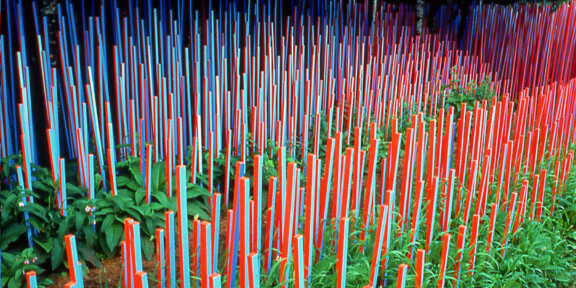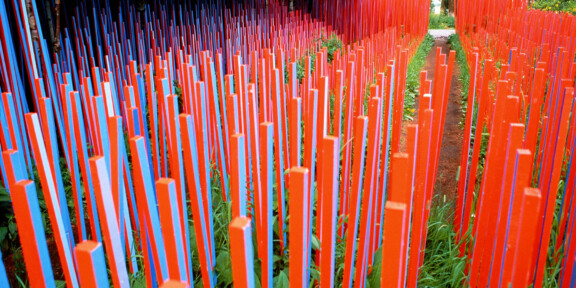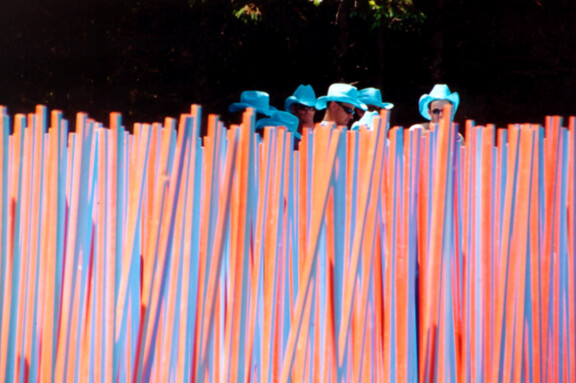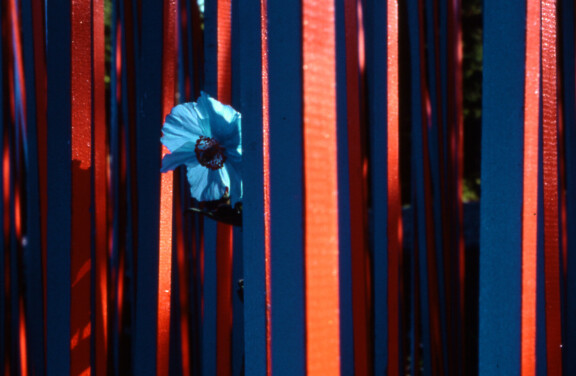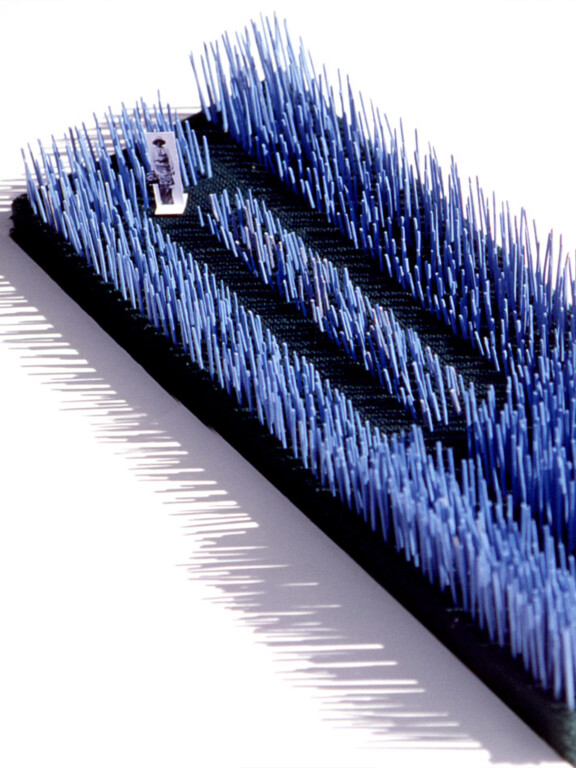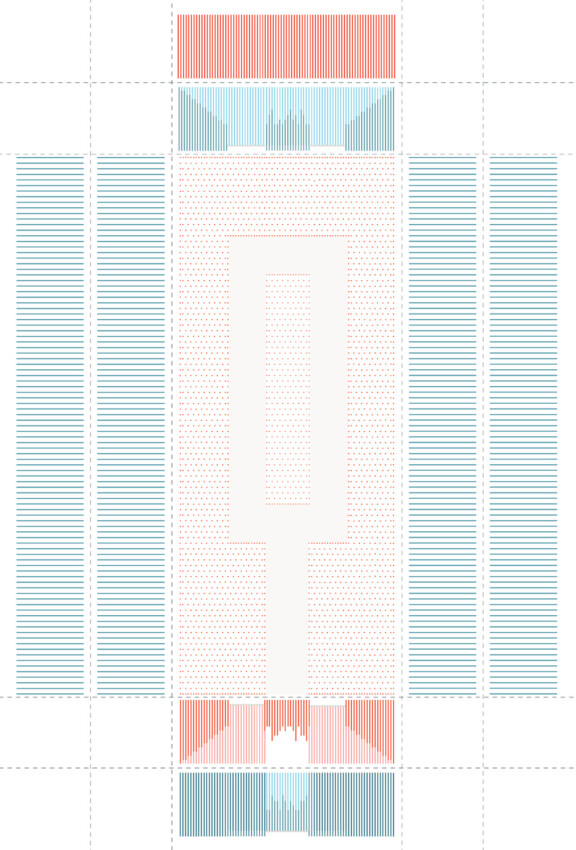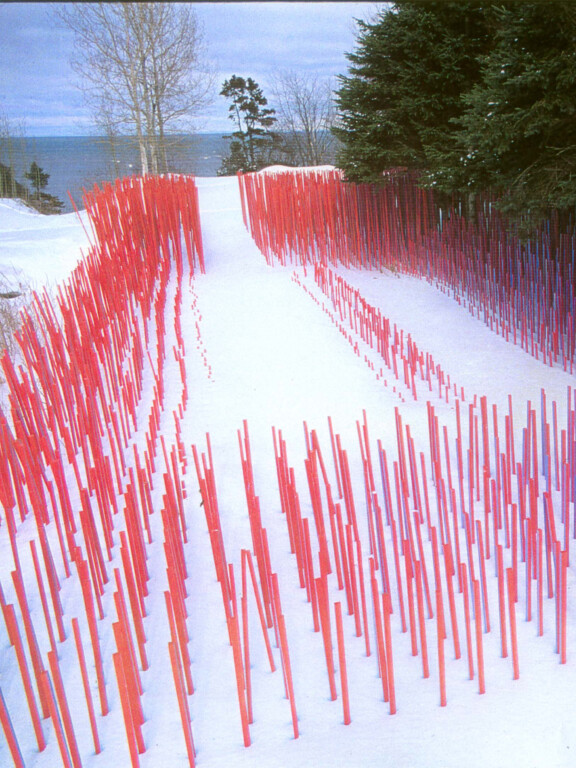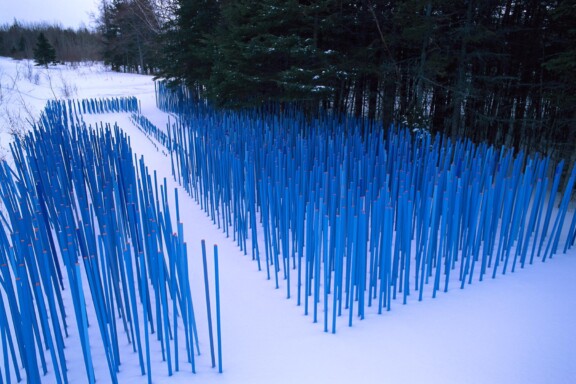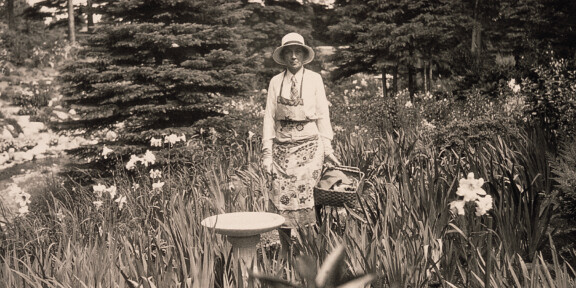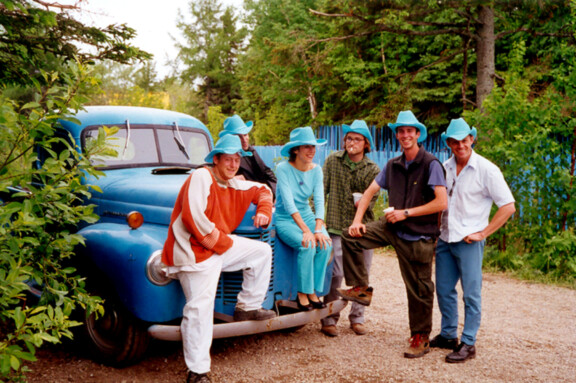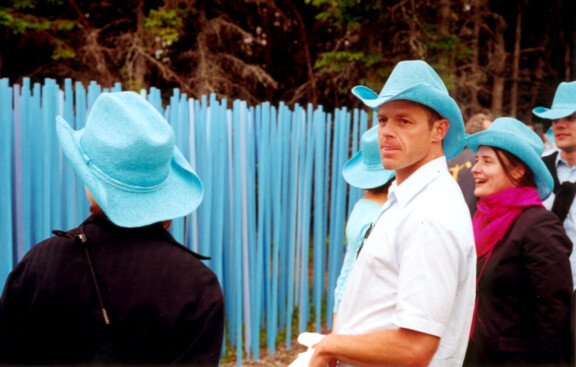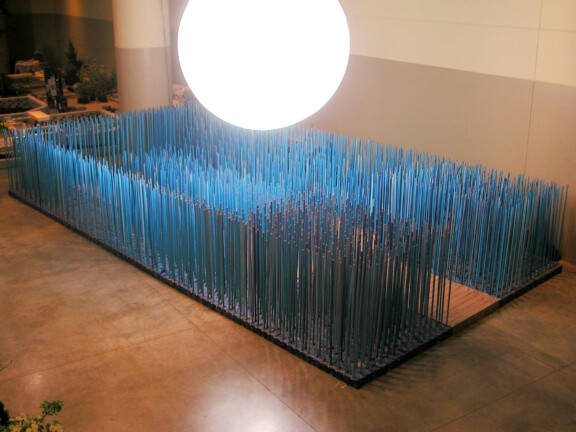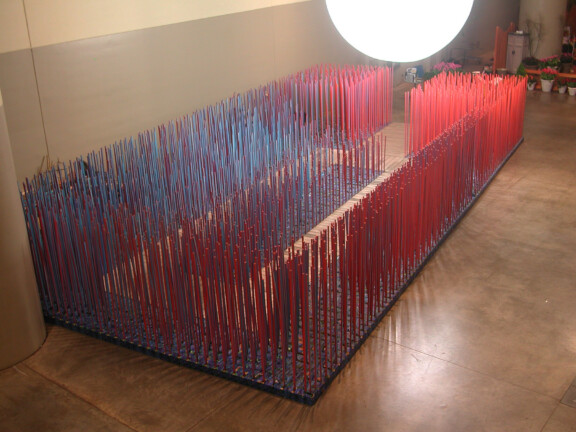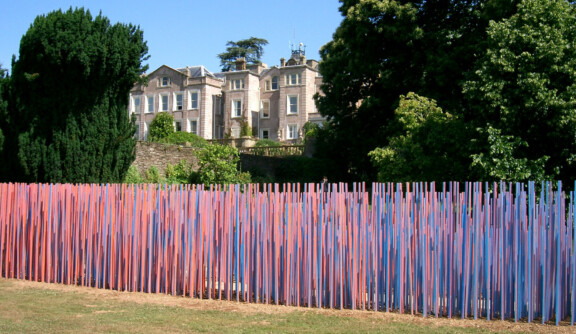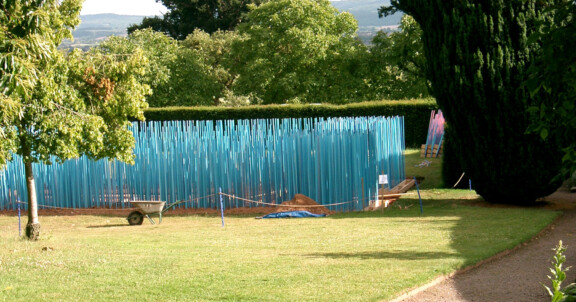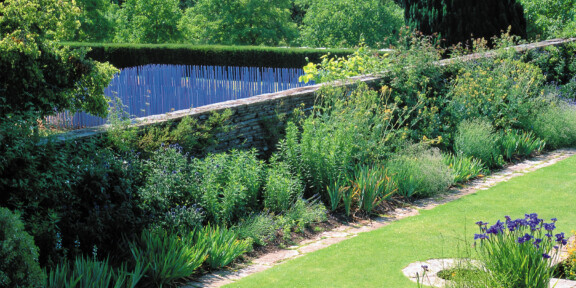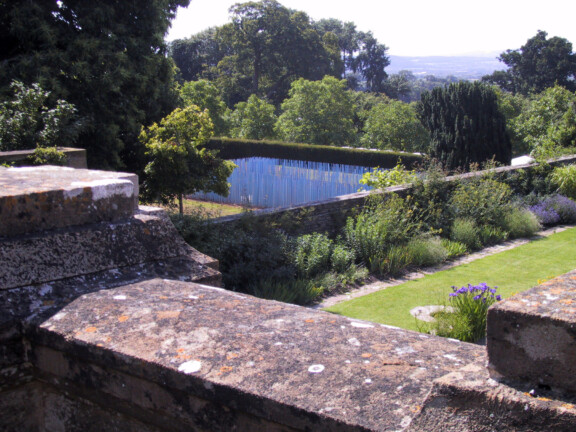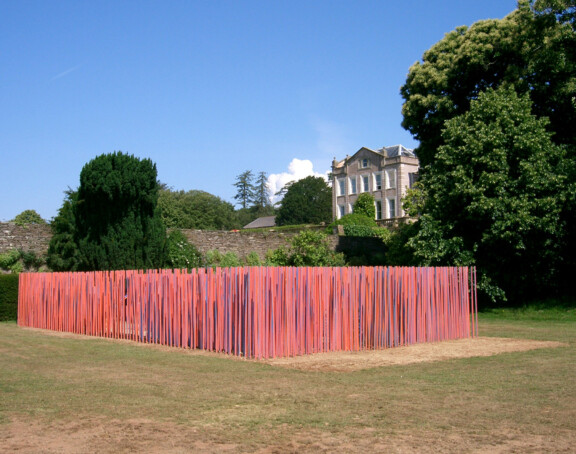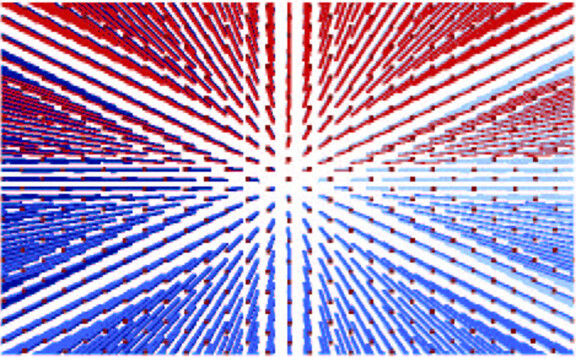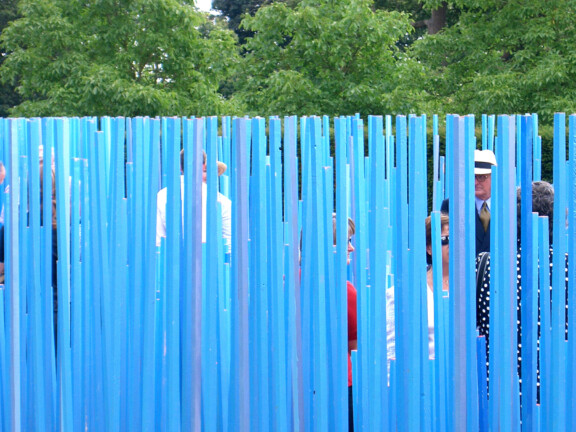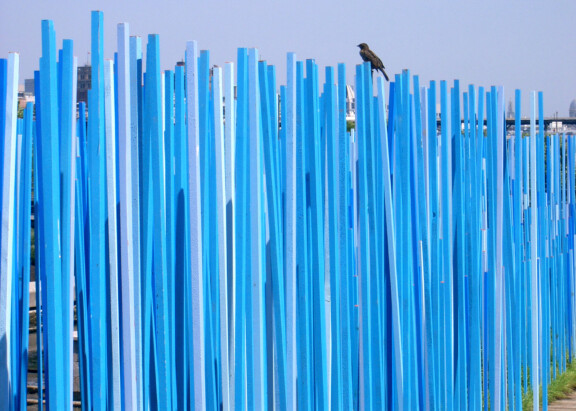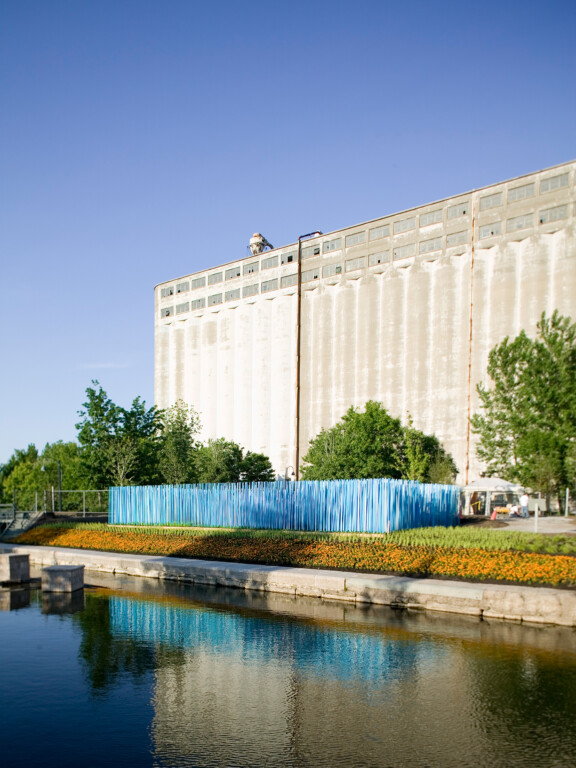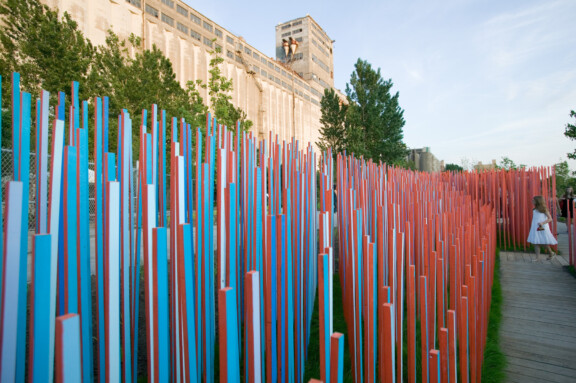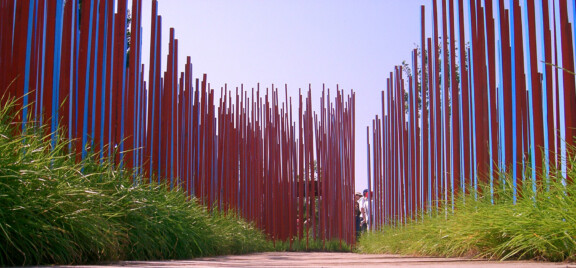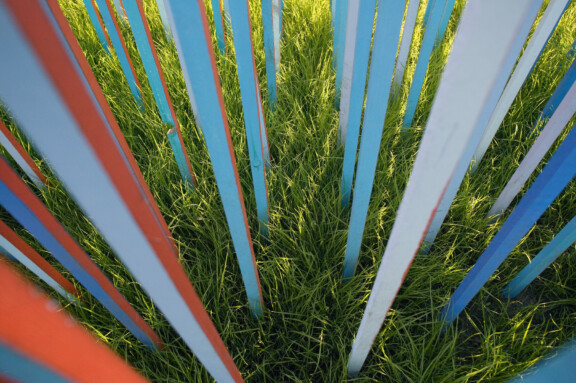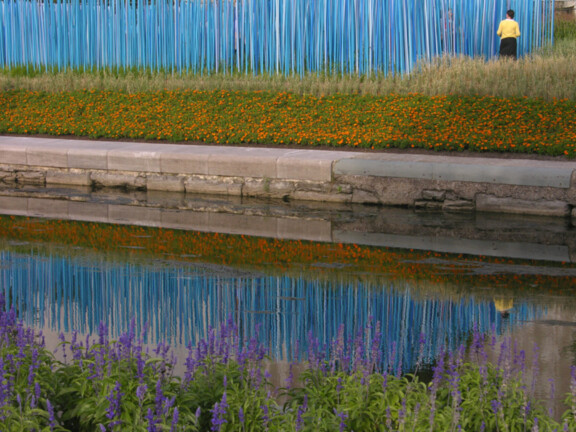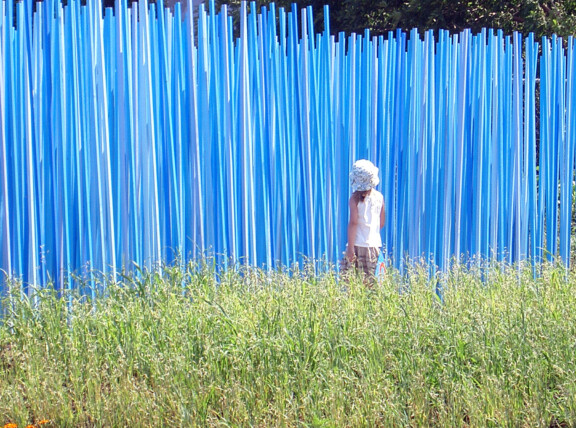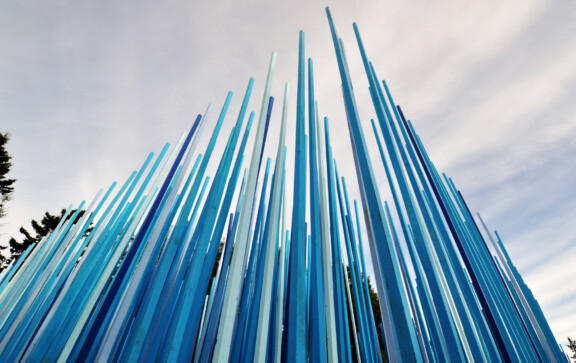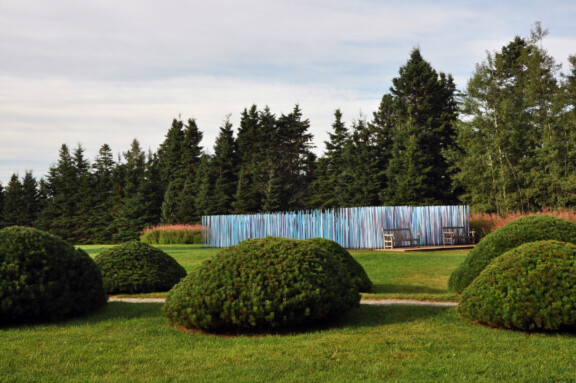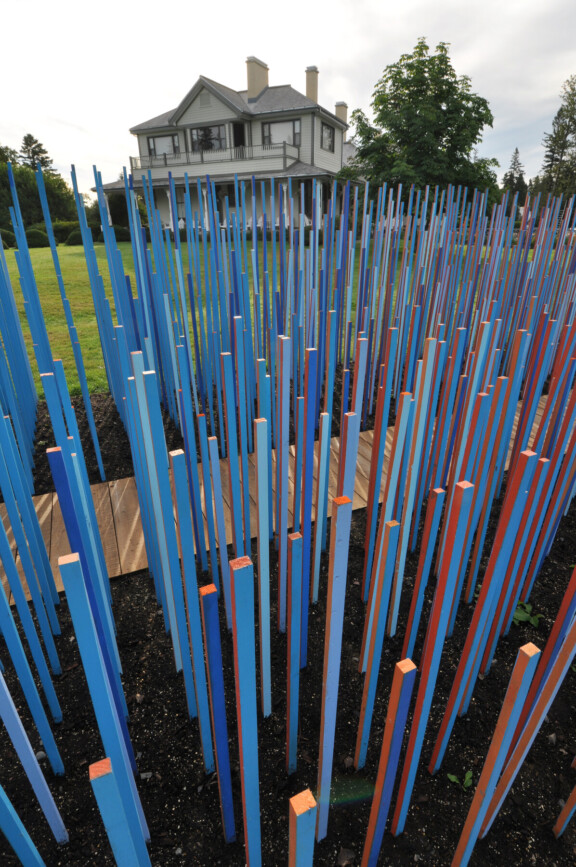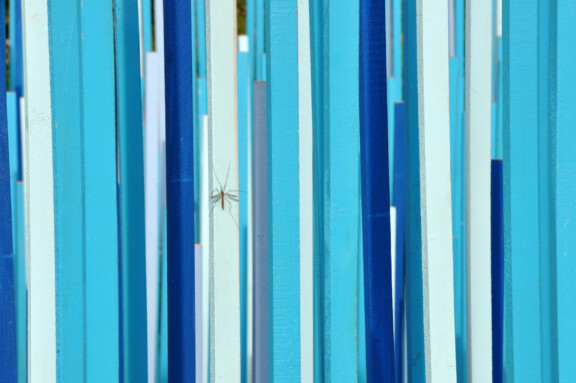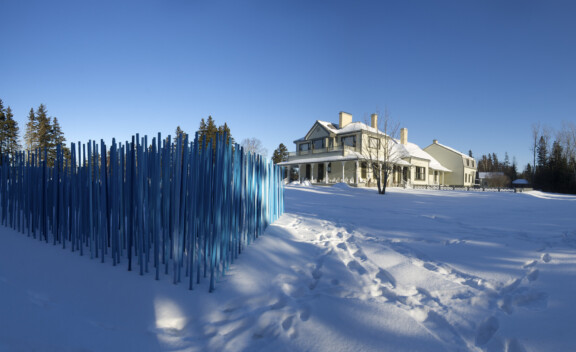Iconic garden installation
On the occasion of the first International Garden Festival in 2000, we recast the principal symbols of the Métis Historical Gardens into a modernist idiom. The Blue Poppy (the garden’s most prized flower) was scanned, fractalized and turned from blue pixels into blue sticks. They were set against a background of trees to form an abstract reproduction of the traditional Victorian mixed border. The Blue Stick Garden traces the evolution of our visual culture, from impressionist brushstrokes to digital outputs. This promenade offers a chromatic experience compressing time and space.
Blue Stick was the only garden invited to celebrates the centenary year of the world famous formal gardens at Hestercombe, founded in 1904. The Hestercombe installation of Blue Stick links the iconic work to the site of its inspiration. Conceived as a contemporary interpretation of the famed promenade, the “controversial” Blue Stick pixellates the densely planted, colour-intense mixed perennial flower borders developed in the nineteenth century by Gertrude Jekyll, the creator of Hestercombe Gardens. In lieu of flowers, visitors to Blue Stick enter a field of painted sticks – blue on three sides, orange on the fourth – creating a perceptually rich experience of colour in movement.
Returning to Québec in 2006, Blue Stick was installed at Montréal’s Old Port during the summer festival season. The brightly coloured sticks stood out against the grey backdrop of the historic silos, while their straight-edged rigour picked up on the geometric lines of the urban environment. For the Canada Blooms garden show, the Blue Stick Garden was uprooted and shipped to an indoor venue in Toronto. An electric blue moon 12 feet in diameter suspended overhead bathed the garden in a diffuse light evocative of the romantic outdoors.
Les Jardins de Métis celebrated its tenth edition of the International Garden Festival in 2009. Ten years after its debut as part of the inaugural edition of the Festival in 2000, the iconic Blue Stick Garden returned as a permanent installation next to the Villa Estevan (1887) in the most historic part of the gardens. This decision ensures the continued existence of Blue Stick Garden not as a contemporary installation in a garden, but as a garden in itself.
In 2013, Blue Stick reappears in Winnipeg as a part of the Cool Gardens public exhibition of contemporary garden and art installations.
